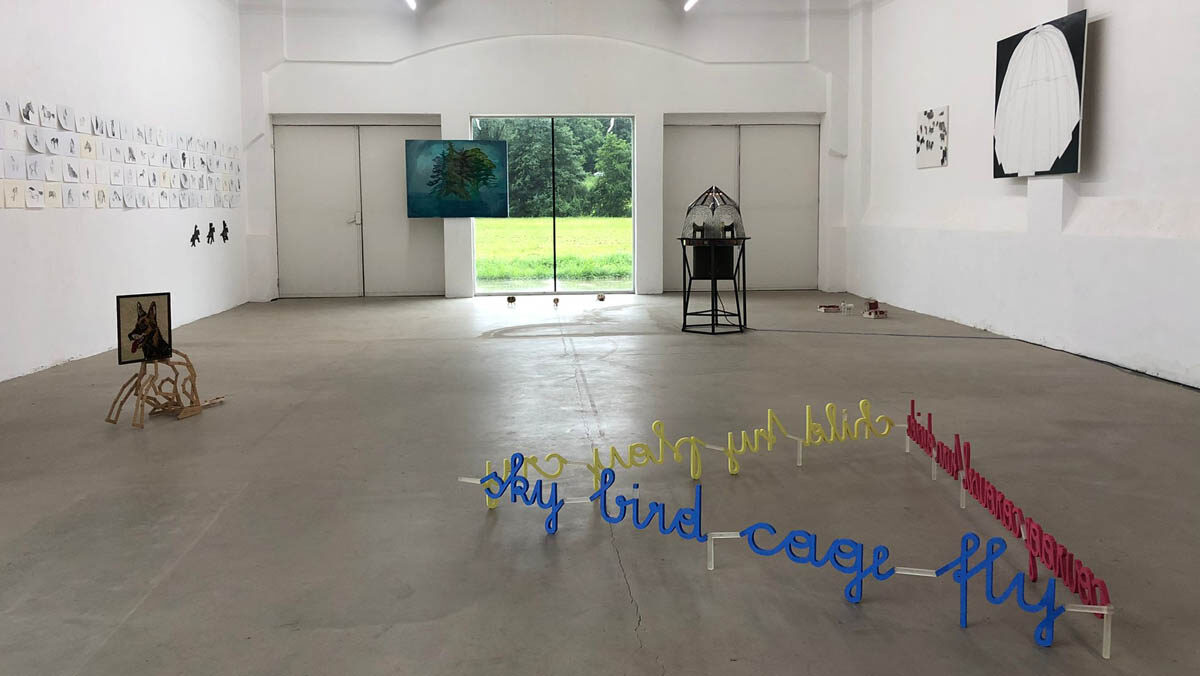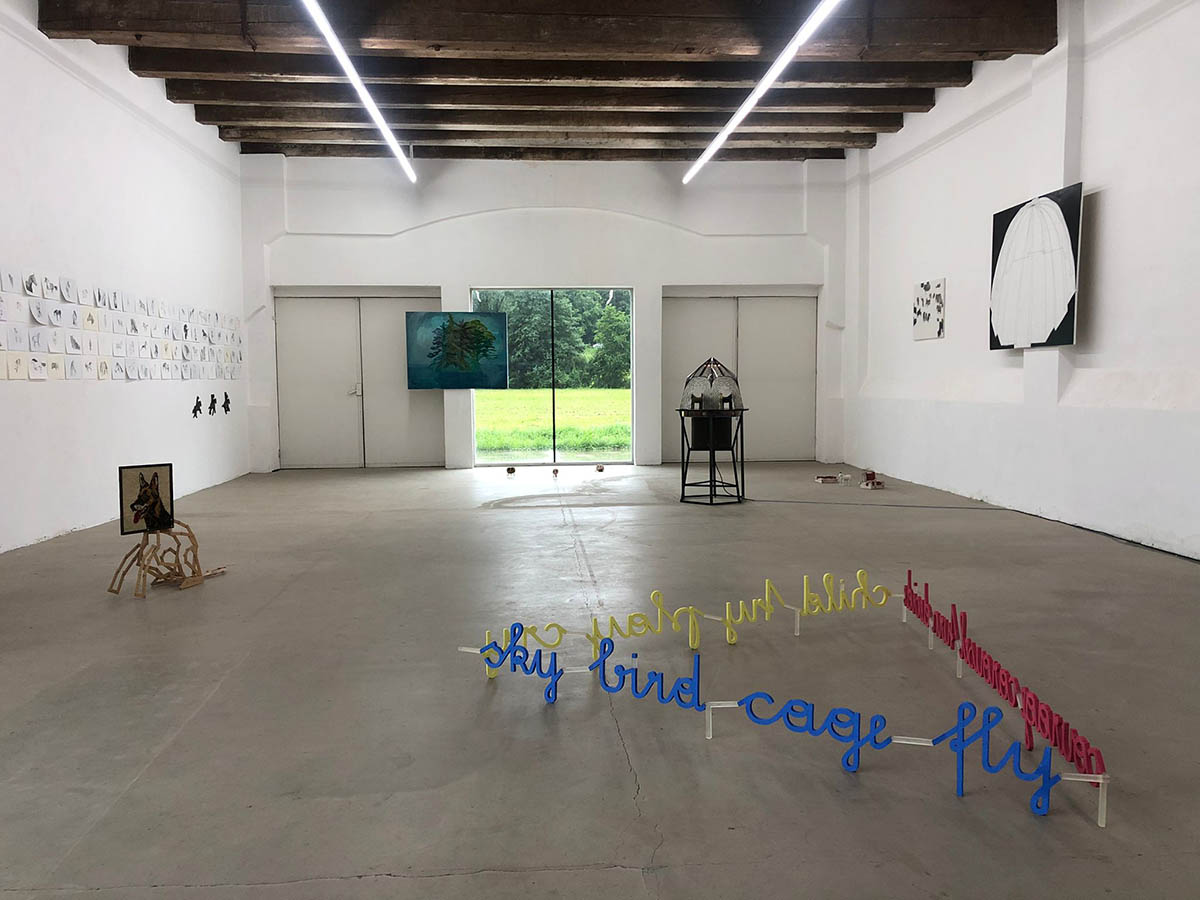
Am Samstag, 12.08. 2023 findet ein Kreislmarkt in ganz Neumarkt an der Raab mit einer performativen Intervention von Anna Paul zu Brot und Öl in der Ausstellung Ernte 23 statt. Die stillgelegte Ölmühle in Neumarkt an der Raab bietet im Rahmen des HochSommer Festivals Anita Fuchs, Ralo Mayer, Anna Paul, Rita Süveges den Raum für Arbeiten, die sich mit Nutzung unserer Lebensgrundlagen auseinandersetzen.
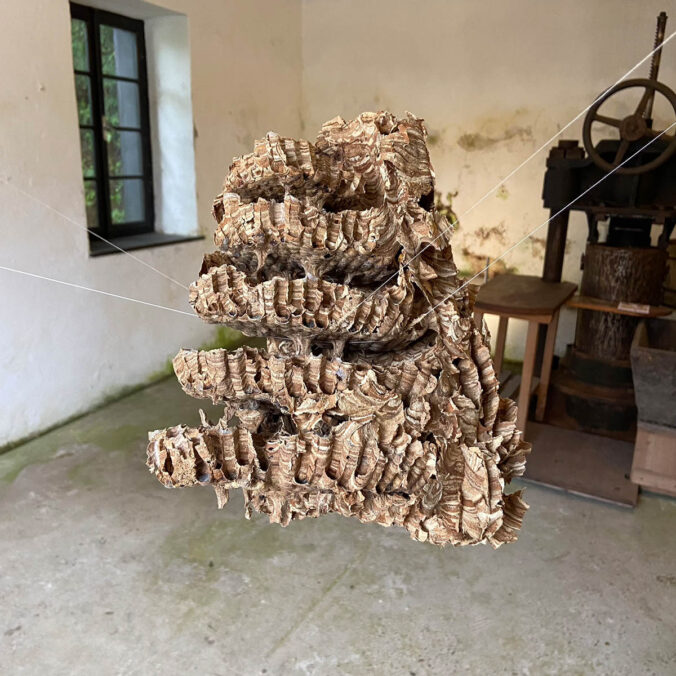
Anita Fuchs, „Flugobjekt EicheBucheBirke und Landkarte des zwecklosen Wissens“, 2023 © Paula Marschalek 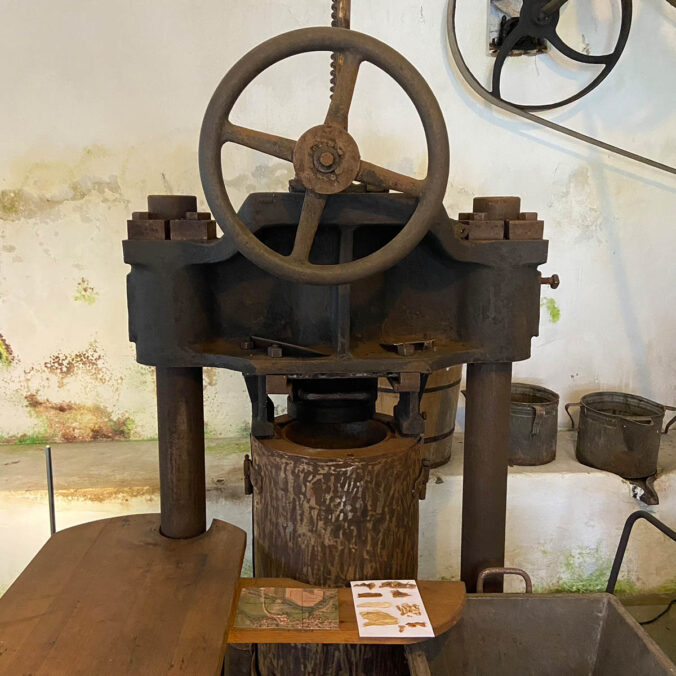
Anita Fuchs, „Flugobjekt EicheBucheBirke und Landkarte des zwecklosen Wissens“, 2023 © Paula Marschalek
Nicht weit entfernt, setzt Christian Eisenberger bei Landart Eisenberg in St. Martin an der Raab seine Bilder Wind und Wetter aus. Er ist bekannt für landschaftliche Gestaltungen bzw. Umänderungen, so greift hier die Natur in die Kunst ein und wandelt die Werke ihrer Vergänglichkeit entgegen. Angesichts der aktuellen Lage bekommt das Dach aus Kunstwerken eine noch dringlichere Bedeutung. Im Zuge des Festivals findet am 09.08. ab 21:00 ein Film Screening statt.
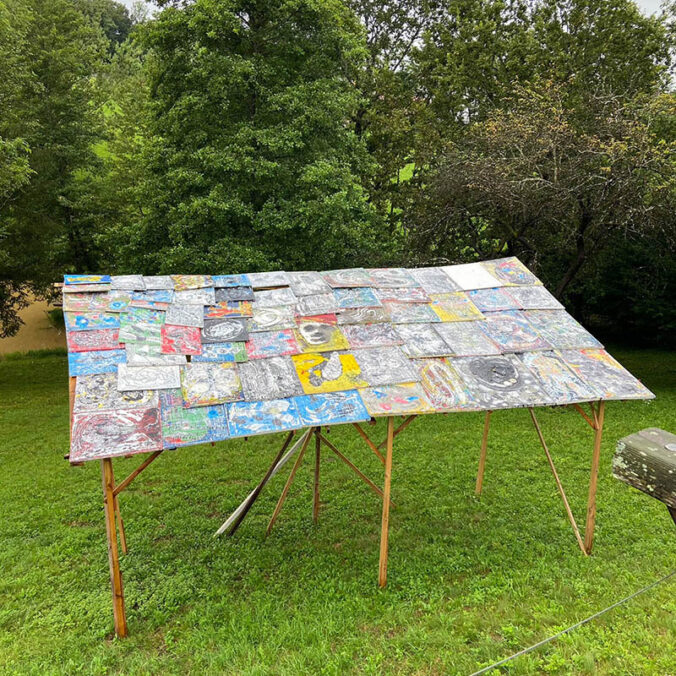
Christian Eisenberger bei Landart Eisenberg © Paula Marschalek 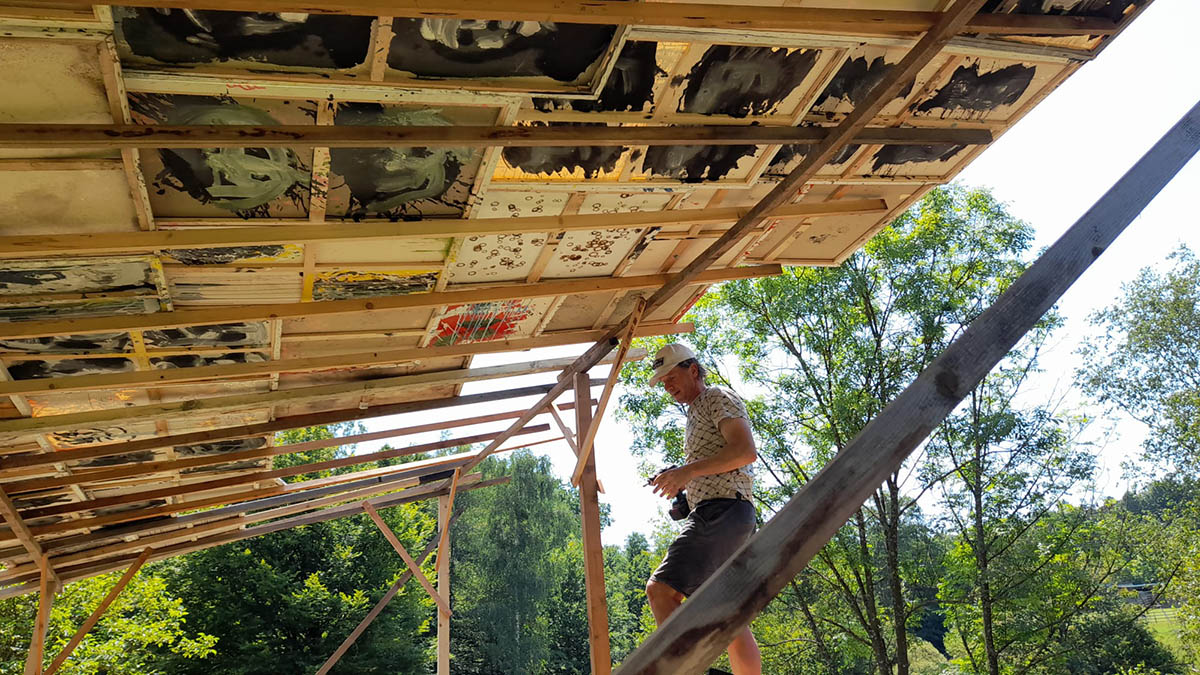
Christian Eisenberger beim Arbeiten © Lisa-Maria Schmidt
Im Tiefkühlhaus Jennersdorf zeigt Beate Gatschelhofer die Installation „Sein und Tun“ und eröffnet eine humorvoll-kritische Blickweise auf Technologisierung unserer Umwelt und Energieressourcen. Durch die Übersetzung von Kabel und Steckdosen in andere Materialien sind diese zweckentfremdet und dysfunktional. Die Installation spielt mit Imitation, Aneignung, Zufälligkeit und Inszenierung.
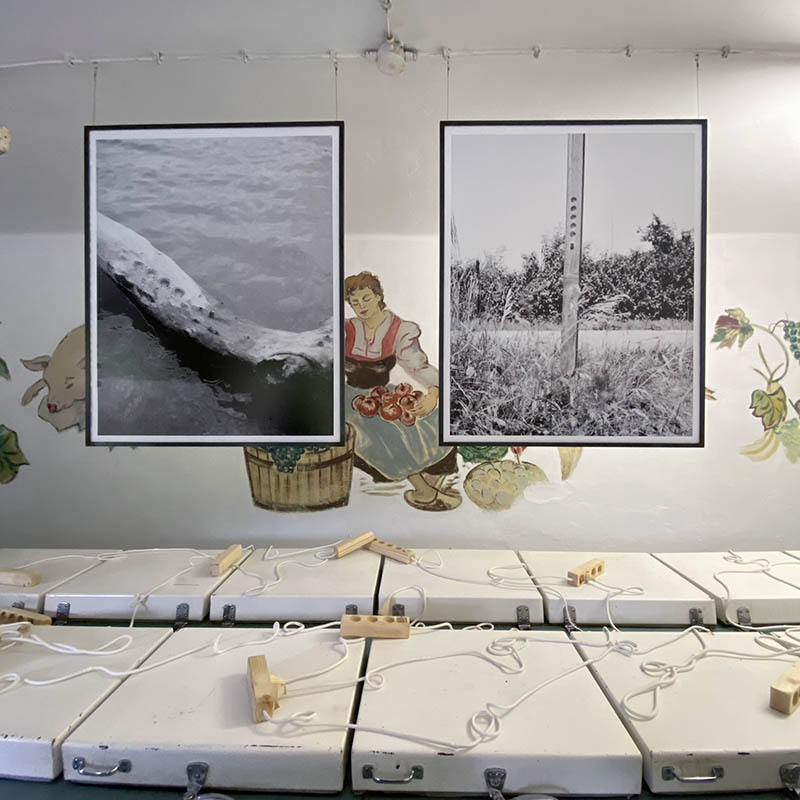
Am Donnerstag 10.08. 2023 findet 19:00 im Gerberhaus bei Austrovinyl Werk2 in Fehring ein Ausstellungsgespräch zwischen dem Künstler Roland Reiter und dem Kurator Roman Grabner statt. Für eine musikalische Intervention basierend auf Skizzen und Songs von ManfreDu Schu formierte sich die Gruppe Hell Mutang-Roland REITER-SCHUschu und lässt in elektronische Klangwelten und motorische Rhythmik eintauchen.
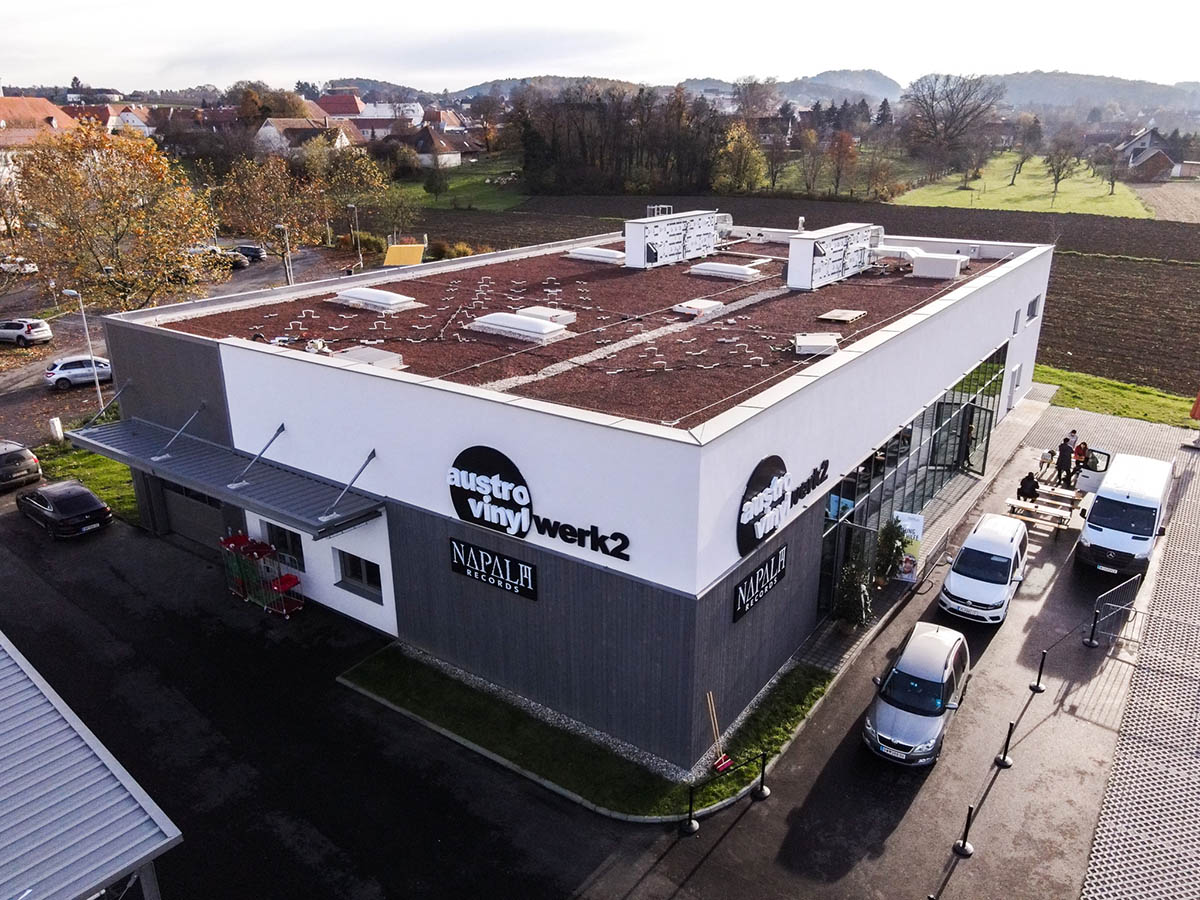
Die Initiativen L201 von Alfred Lenz und Hafen 42 von Christina Helena Romirer setzen sich mit Zwischenräumen auseinander, die es noch weiter zu erforschen und zu vermessen gilt. Die von Hans Schabus ortsspezifische Installation „Von Hier nach Dort“ stellt die stark befahrene Landstraße in den Mittelpunkt. Eine Tribüne wurde beim gegenüberliegenden Acker des Kunstraums L201 aufgestellt, wo das Publikum Platz nehmen und den kommenden Konzerten lauschen kann. Am 15.08. 2023 finden von 19:00-21:00 Performances von Peter Piek und Felix Helmut Wagner statt.
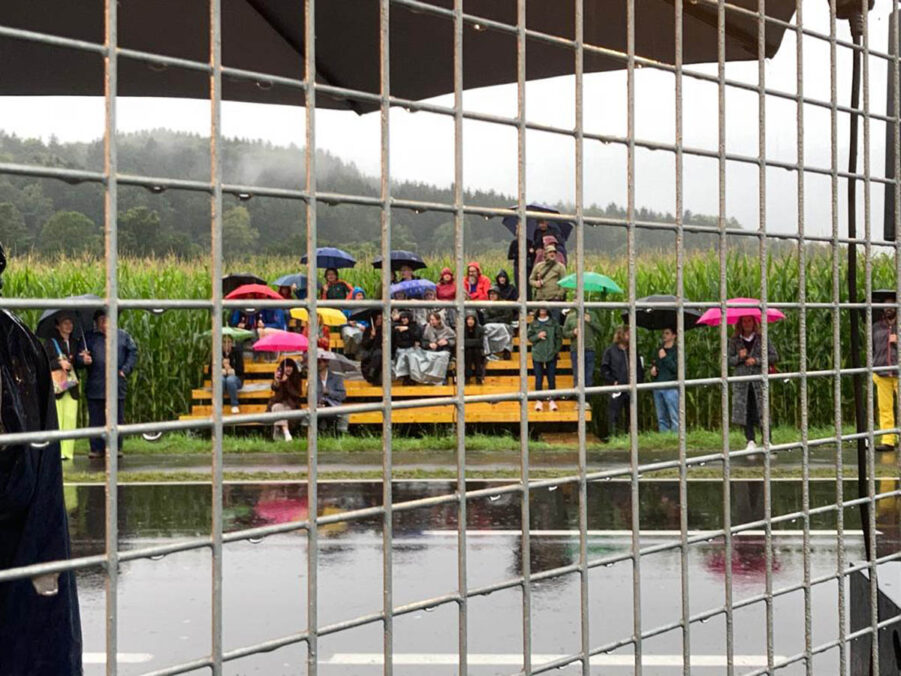
Hochsommer 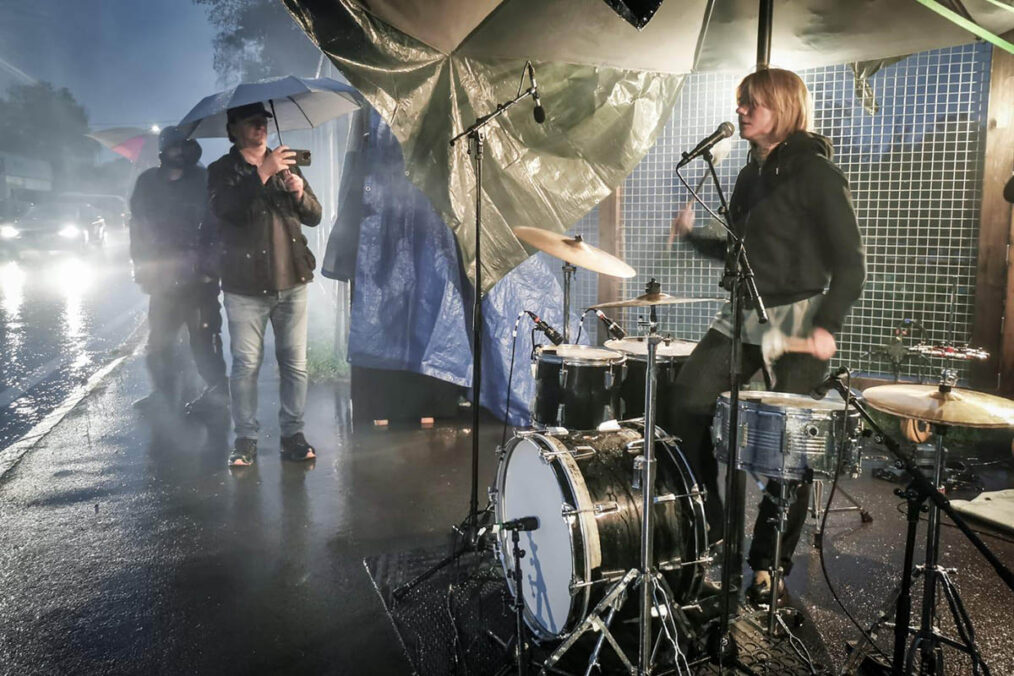
Hochsommer
„states of IN-BETWEEN“ mit Beiträgen von Lena Gätjens, Miriam Hamann, Eva Seiler, Michaela Schweighofer und Markus Wilfling bespielt die Au. Ein üblicherweise nur durchwanderter Raum, wird zum Ausstellungsort, dem Gedanken, Ideen und Geschichten eingeschrieben werden. Das Erkunden und Erforschen der Umgebung, der Natur, der Uferlandschaft mit ihren spezifischen Qualitäten bilden einen Ausgangspunkt für die Arbeiten.
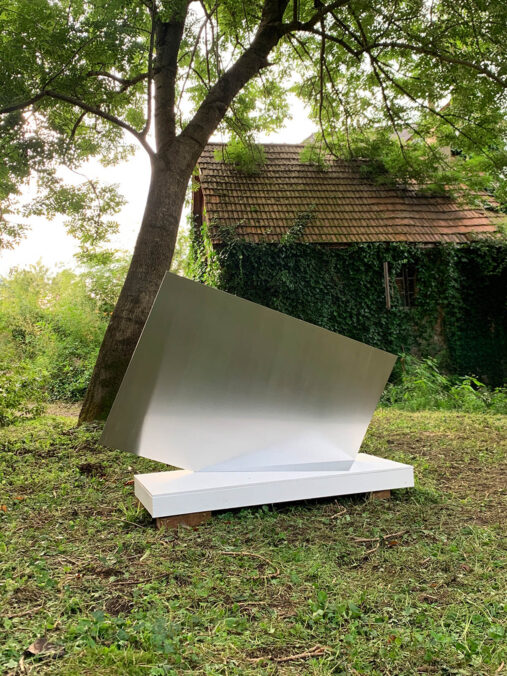
22_Miriam Hamann_Hafen42 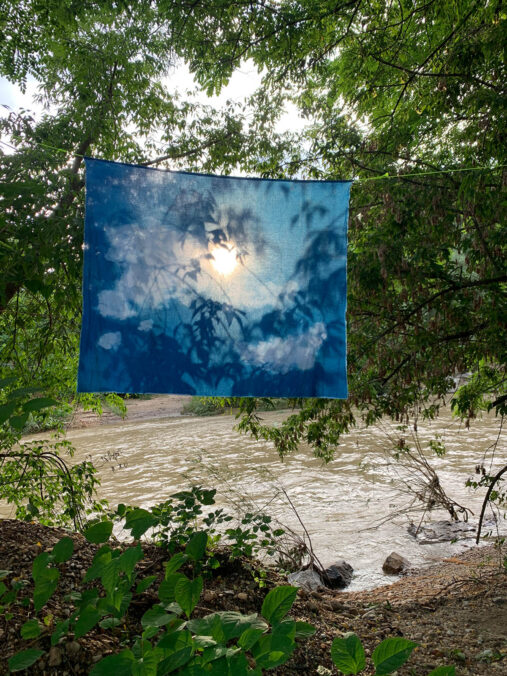
19_Lena Gätjens und Christina Helena Romirer_Hafen 42
Mit der Interaktion zwischen Mensch und Pflanze sowie zwischen Pflanzen untereinander setzt sich die slowenische Künstlerin Špela Petrič im Kunstfenster Gnas auseinander und inszeniert mit Institute for Inconspicuous Languages: Reading Lips ein Experiment. Dieses spekulative Experiment spielt humorvoll mit unserer anthropozentrischen Weltsicht, die allen Lebewesen unsere Sprache und damit unser Wollen aufoktroyiert.
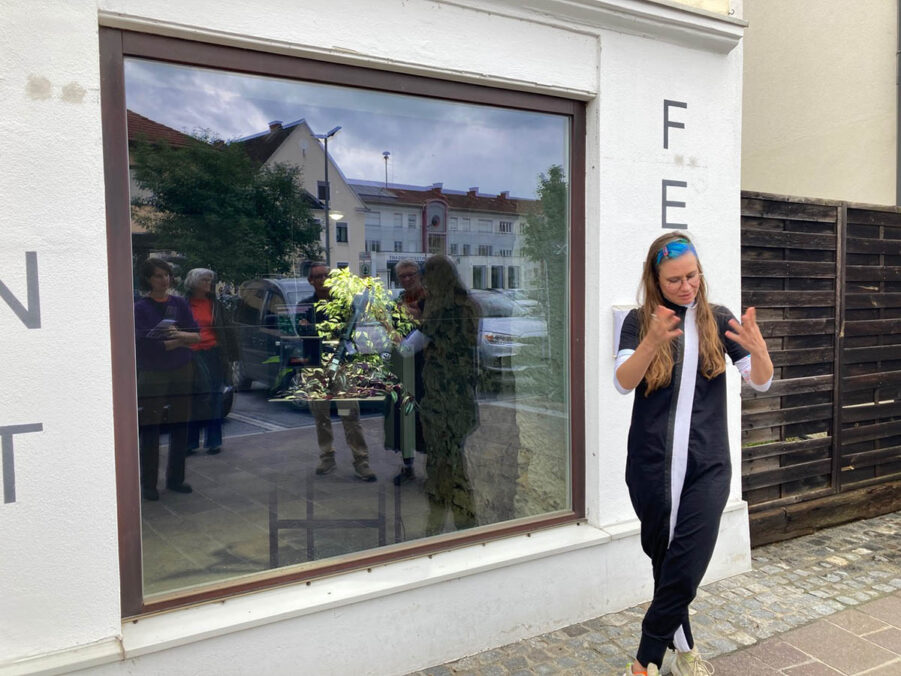
Die Gruppenausstellung „PS“ im KS Room mit Beiträgen von Catrin Bolt, Alfred Lenz, Alban Hajdinaj, Mirna Kutleša, Jakob Lechner, Gianna Virginia Prein und Céline Struger, geträumt von Markus Waitschacher am 23.09.2022, spielt mit der menschlichen Übertreibung sowie der Überhöhung über die Tiere als auch über die Natur. Catrin Bolt visualisiert in ihrer Serie aus 300 Zeichnungen die Kraft von 300 PS (=Pferdestärken), welche die meisten größeren Autos heute überschreiten. Mirna Kutleša portraitiert fiktive Landschaften, indem sie unterschiedliche Pinienarten auf einer Art Toteninsel zusammenbringt.
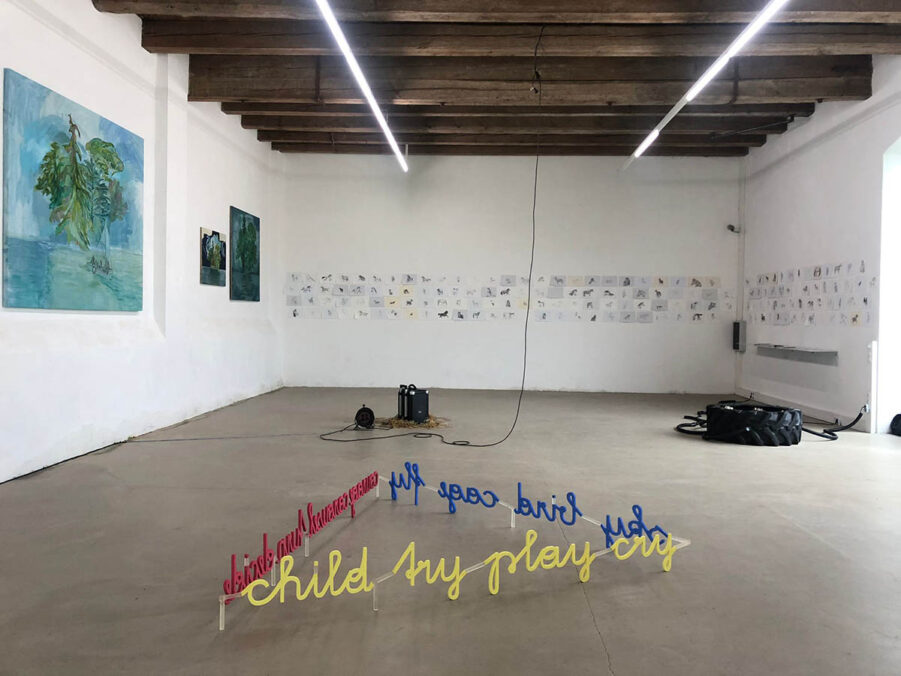
Ausstellungsansichten PS © Markus Waitschacher 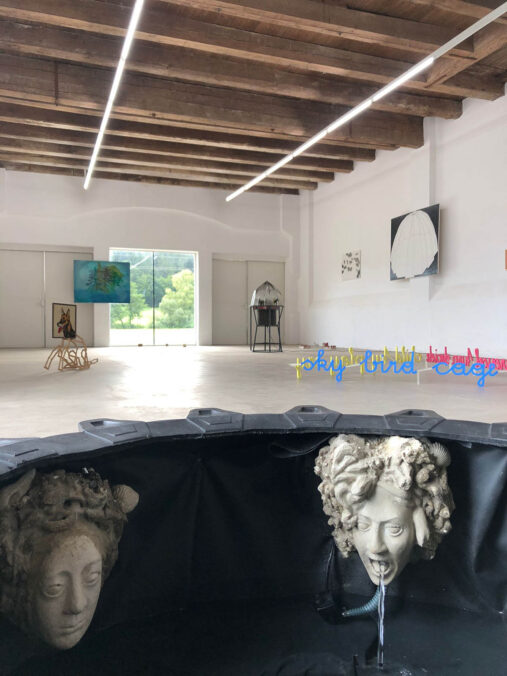
Ausstellungsansichten PS © Markus Waitschacher
Mit der Ausstellung Spalt/Vrezel/Gap – the inner border II setzt sich das Pavelhaus mit dem Phänomen gesellschaftlicher Spaltung auseinander. Künstlerische Positionen und engagierte Initiativen beschäftigen sich mit Brücken und Brüchen innerhalb von Gesell- schaften und Regionen. Am 11.08. führt der Kurator David Kranzelbinder durch die Ausstellung, anschließend findet eine Lesung mit dem Autor Muanis Sinanović und ein Konzert mit Chris Eckman & Band statt.
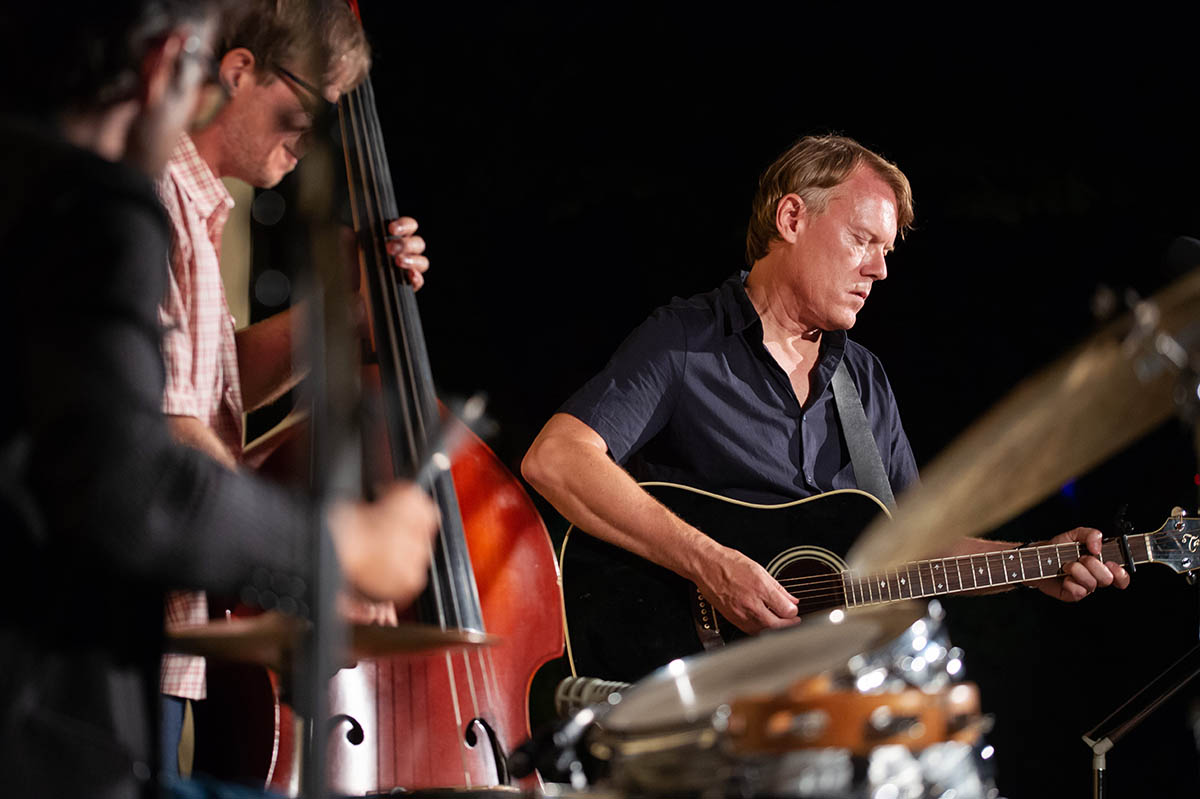
In einer länderübergreifenden Ausstellung „BioGrad On humans and nature“ mit Beiträgen von Bartłomieja Kużniaka, Špela Petrič, Ruth Größwang, Taro Knopp, soll das Verhältnis vom Umgang von Informationen zum Klimawandel auch als die Gesellschaft spaltendes Element zum übergeordneten Thema werden. Das Schloss Grad ist heute Zentrum eines Naturschutzgebietes das direkt an Österreich grenzt.
Weitere Termine:
Donnerstag, 10. August 2023, 19:00 Gerberhaus bei Austrovinyl Werk2 Ausstellungsgespräch zwischen dem Künstler Roland Reiter und dem Kurator Roman Grabner
Freitag, 11. August 2023, 18:30 Pavelhaus Lesung Muanis Sinanovic, anschließend Konzert Chris Eckman & Band
Samstag 12. August 2023, ab 11:00 Kunsthalle Burgenland im Künstlerdorf Neumarkt a.d. Raab Kreislmarkt mit Künstler*innen, Produzent*innen
Sonntag 13. August 2023, 18:00 Wald unterhalb Schloss Poppendorf, Waldkonzert vom Jodlklub
Dienstag 15. August 2023, 19:00 Performances von Peter Piek und Felix Helmuth Wagner, L201
Alle Ausstellungen sind von 05.-15.08. von 10:00-19:00 geöffnet, Freitag & Samstag jeweils bis 21:00. Nähere Infos und das gesamte Festivalprogramm unter: www.hochsommer.art



